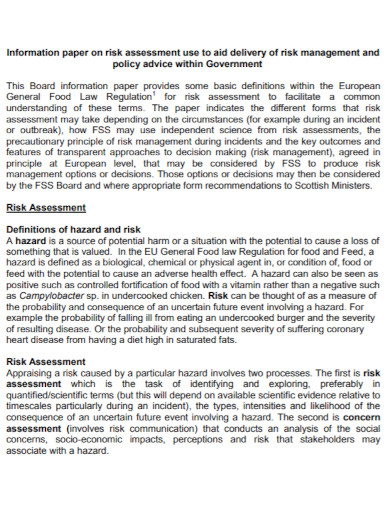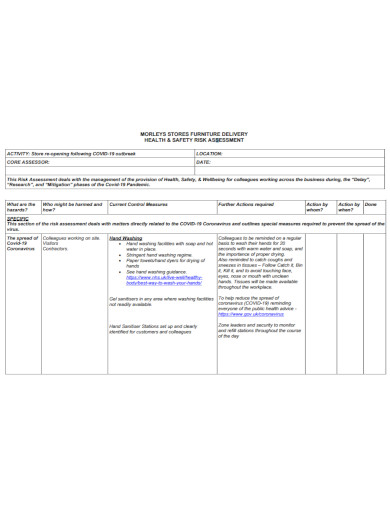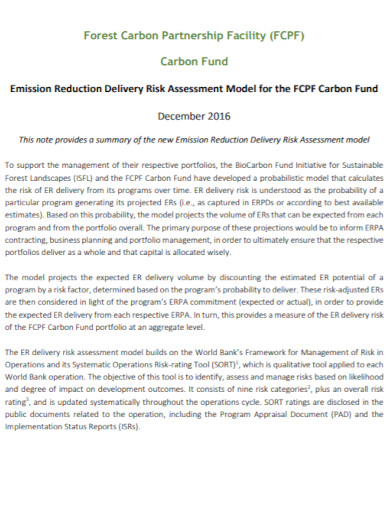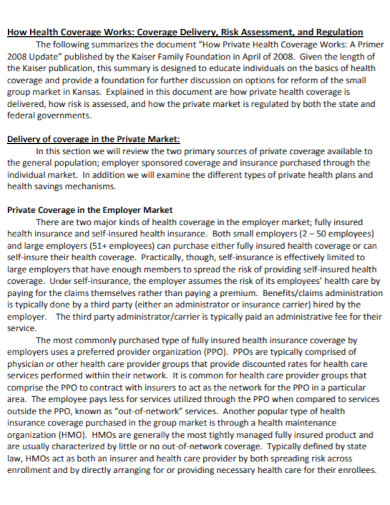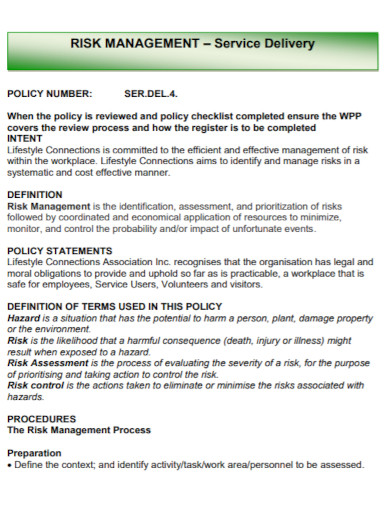5+ Delivery Risk Assessment Examples to Download
In this time and year, it is not only best to get things delivered in record time. But it is also safer than having to go out and buy the things you need. With the current problem right now, there are also things that you can reconsider when delivering food or important things to your doorstep. It goes without saying, anything can happen with deliveries. Whether it may be a positive or a negative effect. It may seem unavoidable at times and it can also get frustrating. But just like problems, there are always ways or solutions for them. Check out 5+ Delivery Risk Assessment examples in PDF.
5+ Delivery Risk Assessment Examples
1. Standard Delivery Risk Assessment
2. Furniture Delivery Risk Assessment
3. Carbon Fund Delivery Risk Assessment
4. Delivery Risk Assessment Template
5. Service Delivery Risk Assessment
6. Facilitator Delivery Risk Assessment
Definition of Risk
The term risk means a situation in which something may happen with negative consequences. Something that is often seen in a negative way. As it causes trouble and loss. A problem that oftentimes we have no control over. Something or someone that takes full advantage and responsibility over the actions that may cause dangerous outcomes. In addition to that, a risk is also a type of issue that can be stated as dangerous and filled with bad results or bad outcomes depending on the severity of the problem.
Definition Risk Assessment
A risk assessment is a tool used to assess, process, evaluate and give judgement. The act of identifying and giving judgement through a series of examinations towards any type of risk. That may either be hazardous, severe or safe for the public. To know the risks that poses on workplaces, a risk assessment is then done to assess, list and see if the place or the job is safe for everyone. Risk assessments help determine and find a solution to the hazards that we can control, and to find a way to eliminate the ones we cannot. Risk assessments are also used to give out good evaluations on a place before you are able to use it. In a simple way, risk assessments are a tool based on a series of examinations that would show, list and help solve problems that may seem too difficult at first glance.
Definition of Delivery Risk Assessment
A delivery risk assessment refers to the risk of not being able to fulfill the side of the agreement being made. The agreement between parties and the issue of the object being delivered. This assessment weighs out the significant risks that may be the reason for the failure to deliver. These problems can arise from health issues, medical emergencies, man made problems and natural causes. In addition to that, it also discusses the underlying issue that may have caused the risk and the failure of not being able to fulfill the side of the agreement. Delivery risk assessments are used to highlight the potential problems that can cause this and to search for a way forward to avoid such problems from happening again.
Purpose of a Risk Assessment
The purpose of doing a risk assessment is to identify and ensure that what job you are doing is safe for all. That the risk or the hazards that go with it do not break the code of conduct for employees. In addition to that, it is also used as a way to protect people involved in that type of job from the hazards they cannot control. As well as the risks that can be controlled. Another purpose for doing a risk assessment is to help minimize the chances of mishandlings and fatal injuries to parties involved. Risk assessments are as vital as any other tool to keep your employees safe.
Tools Used for Risk Assessment for Delivery
- Narrative Report
- Checklist
- Tick the Box
- Outline
- Bullets
- Survey
Tips for Risk Assessment for Delivery
- Check every little detail – This includes your vehicle, your health and the item you are delivering. You must also check the roads that you may travel along if there is little to no problem that could cause a delay in your delivery.
- Be prepared – Even if the delivery may be short or longer, depending on the location, always be prepared for anything that can happen.
- List down the hazards – List them down if you have had any issues along the way. This list can also help you down the road. As well as having the list, it can help you avoid the problems later.
- Keep track of the solutions – keep track of the solutions you did and the steps that lead to it.
- Update as necessary – Update all the steps and solutions you have done. As well as the hazards that you have faced during that delivery. These are your notes and are as important in helping find a better solution for the risks.
FAQs
Is it necessary to list the hazards down?
Yes. It is as necessary as it is merely doing a survey or an assessment for future references.
How often should I update my assessment notes?
As much as you possibly can. As this will help you compare the previous ones to your current ones. See if there is any difference.
Can my assessment be wrong at times?
The only time it may be wrong is when in the analysis you may have missed one key component.
Who should be responsible for the assessment?
It is usually the employer’s responsibility but anyone can do the assessment notes. The evaluation and the results should be then given to your superiors.
Delivery risks are found almost anywhere at any time. But rather than having to deal with the issues and hazards that go with the business, you can always set up a risk assessment to check first.



